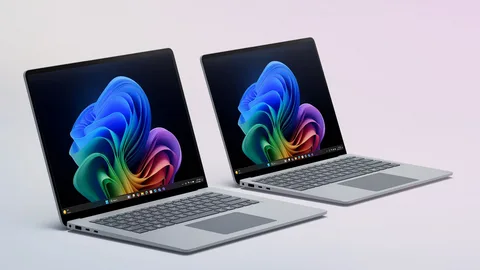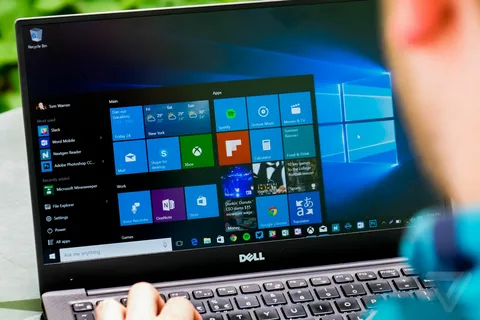Introduction
In the ever-evolving landscape of technology, Microsoft has consistently been at the forefront of innovation, shaping the way we interact with computers. Microsoft’s Copilot+ PC Their latest endeavor, the Copilot+ initiative, marks a significant leap in the realm of artificial intelligence (AI) integration within personal computing. However, this ambitious push leaves existing “AI PCs” trailing in its wake, raising questions about the future of AI in everyday computing and the accessibility of these advancements for the average consumer.
The Advent of Microsoft Copilot+
Microsoft’s Copilot+ represents a paradigm shift in how we perceive and utilize AI within our PCs. This advanced AI integration promises to transform the user experience by embedding sophisticated AI capabilities directly into the operating system and core applications. Copilot+ is designed to function as an intelligent assistant, seamlessly integrating with Microsoft Office Suite, Windows, and other essential software, providing real-time assistance, predictive insights, and automation features that streamline productivity.

At its core, Copilot+ leverages the latest advancements in machine learning and natural language processing,Microsoft’s Copilot+ PC enabling it to understand and respond to complex user queries with remarkable accuracy. Microsoft’s Copilot+ PC This integration goes beyond simple voice commands and basic task automation; it is poised to redefine efficiency by anticipating user needs and offering proactive solutions.
The Lag of Existing AI PCs
While the advent of Copilot+ heralds a new era of intelligent computing, it simultaneously exposes the limitations of existing “AI PCs.” These earlier models, touted for their AI capabilities, often rely on discrete AI hardware accelerators and basic machine learning algorithms.Microsoft’s Copilot+ PC Although they represented a significant step forward at the time of their release, they now appear rudimentary compared to the holistic and deeply integrated approach of Copilot+.

Existing AI PCs typically offer features like enhanced voice recognition, improved security through facial recognition,Microsoft’s Copilot+ PC and rudimentary predictive text functionalities. However, these features are often siloed, lacking the comprehensive integration that characterizes Microsoft’s latest offering. The fragmented nature of AI applications in these systems results in a less cohesive user experience, where the full potential of AI is not realized.
The Impact on Consumers and the Industry
Microsoft’s push with Copilot+ raises several important considerations for both consumers and the broader tech industry.Microsoft’s Copilot+ PC For consumers, the main question is one of accessibility and value. The leap to a fully integrated AI system like Copilot+ may render their current AI PCs obsolete, prompting a need for upgrades that could be financially burdensome. There is also the concern of learning curves associated with new technology, where users must adapt to and fully understand the benefits and functionalities of Copilot+ to leverage its full potential.

From an industry perspective, Microsoft’s aggressive push could spur innovation and competition, driving other tech giants to enhance their AI offerings. This could lead to a rapid acceleration in AI development, benefiting consumers in the long run with more advanced and varied options. However, it may also create a digital divide where only those with the latest hardware can access the most advanced features, potentially leaving others behind.
Looking Ahead
The introduction of Microsoft Copilot+ is undoubtedly a game-changer in the AI PC market. It sets a new benchmark for what users can expect from their personal computers, blending AI seamlessly into everyday tasks and workflows. However,Microsoft’s Copilot+ PC this advancement also underscores the growing gap between cutting-edge technology and existing systems, highlighting the need for ongoing innovation and accessibility efforts.
As we move forward, it will be crucial for Microsoft and other industry players to address these disparities, ensuring that the benefits of AI are inclusive and within reach for all users. The future of computing is undoubtedly exciting, with AI at its core, but it must be a future that considers and encompasses the diverse needs of the global user base.
Conclusion
Microsoft’s Copilot+ represents a transformative leap in the integration of AI within personal computing, setting a new standard for intelligent,Microsoft’s Copilot+ PC user-centric technology. However, this ambitious push leaves existing “AI PCs” struggling to keep up, highlighting their limitations and the fragmented nature of their AI capabilities. While Copilot+ promises to redefine efficiency and productivity with its deeply embedded AI features, it also raises concerns about accessibility and the potential obsolescence of current systems.
For consumers, the transition to this advanced technology may require significant investment and adaptation, posing challenges in terms of cost and learning curve. On the industry front, Microsoft’s innovation is likely to drive competition and rapid advancements, though it may also widen the digital divide.
Looking ahead, the success of Copilot+ will depend on how well Microsoft and other tech leaders can address these disparities, ensuring that the benefits of AI are accessible to a broad user base. The future of personal computing is undeniably exciting, with AI at its core, but it must be an inclusive future that bridges the gap between cutting-edge innovation and widespread accessibility.

